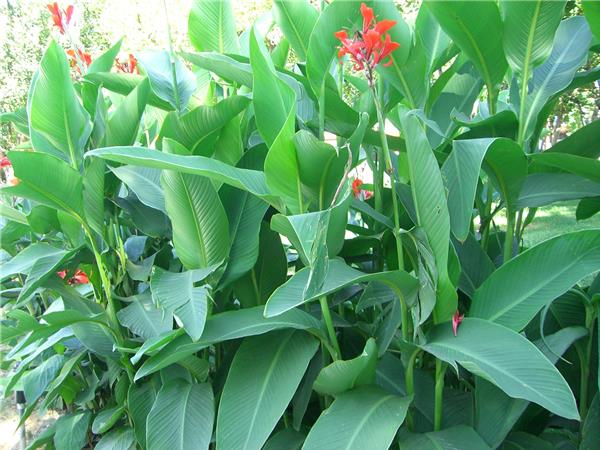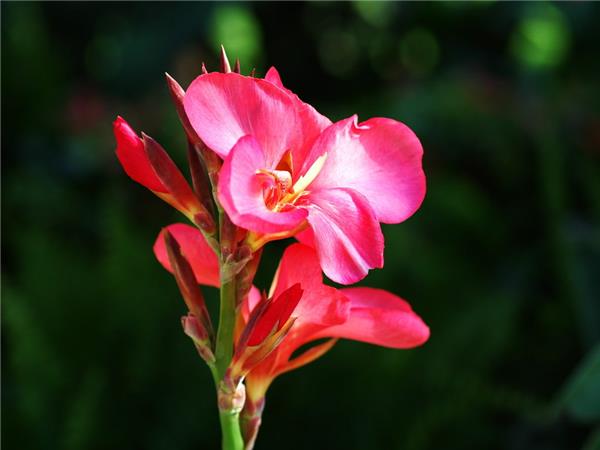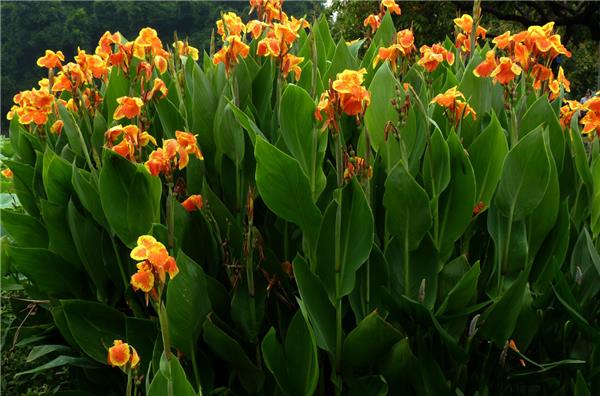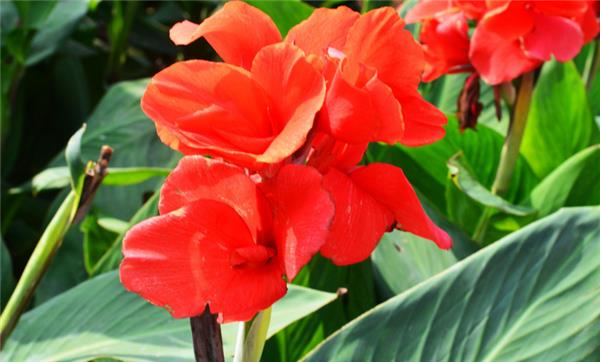[how to grow anchovy] planting method of anchovy
Anchovy is a kind of tropical broad-leaved plant, which is mainly yellow and safflower. In addition, the improved varieties also show purple, pink, complex spots and so on. As the Phoenix tail flower blossoms in the scorching sun in the hot summer season, it brings cool beauty to travelers, its brave spirit of not being afraid of poison day is praised by people, and the flower language is "a better future". So how to grow anchovies?
How to grow anchovies
First of all, seed selection, potted anchovy is suitable for choosing dwarf varieties, the size is relatively small, suitable for indoor breeding. Pot soil is mixed with rotten leaf soil, garden soil, peat soil, mountain mud and other soil rich in organic matter, and applied bean cake, bone meal and other organic fertilizer as base fertilizer.

Secondly, separate planting, choose healthy rhizome to separate planting in March-April. Cut into several pieces according to the size of the rhizome, smooth the incision, and apply plant ash on the incision. When planting separately, the root blocks with 2 or 3 stem buds were buried in the basin soil, and the bud tips were left outside.
Finally, proper maintenance should be carried out according to the seasons and the growth habits of anchovies. Water thoroughly for the first time after planting, and then keep the pot soil moist. When 5 leaves grow, apply liquid fertilizer every 10-15 days (rotten thin bean cake water and add an appropriate amount of ferrous sulfate, or compound fertilizer solution, with a concentration of about 0.3%). Stop fertilizing when flowering. Moving the Phoenix tail to a shady place during flowering can prolong the flowering period. Cutting off the flowering stem after anthesis can promote its flowering again. In hot summer, the cool water temperature and the air temperature higher than 40 ℃ will cause the leaf edge of anchovy to scorch and turn yellow.
Planting
Planted in spring, the distance between clusters is 80-100 cm, and the thickness of the covered soil is about 10 m. After the plant withered in late autumn, cut off the aboveground part, dig out the rhizome, air for 2-3 days, buried in the well-ventilated sand in the greenhouse, do not water, keep the room temperature for more than 5 ℃, you can safely survive the winter. In the south of the Yangtze River, the rhizome can not be dug out in winter, as long as it is sealed with soil, it can still sprout in the second spring.
Fertilizer application
It is necessary to apply sufficient basal fertilizer before planting and more topdressing during the growth period, which can make the growth of plants and flowers more beautiful.

Pest control
Phoenix tail has strong adaptability, extensive management, not delicate, and few diseases and insect pests. Attention should be paid to leaf curling pests from May to August every year so as not to damage their tender leaves and inflorescences. It can be sprayed with 1000 times of 50% dichlorvos or 50% fenitrothasone emulsion. Planting anchovies occasionally occurs in the ground, which can be caught manually or poured into the root soil with 600-800 times liquid of trichlorfon.
Reproduction
The propagation of Phoenix tail is mainly divided into individual plants, and it can also be sown and propagated.
Ramet propagation was carried out from March to April. Dig out the old rhizome, divide it into blocks, keep 2-3 buds on each rhizome, with roots, plant it into the soil about 10 cm deep, keep the plant spacing 40-50 m, and pour enough water. When the new bud grows to 5-6 leaves, one rotten fertilizer should be applied, and it can blossom in the same year. Phoenix tail is propagated less by sowing, but only when cultivating new varieties or propagating in large numbers. Sowing is usually carried out in the greenhouse from March to April every year. Because the shell of the seed is hard, the shell should be cut with a knife before sowing and soaked in 25-30 ℃ warm water for one day. If the temperature is kept at 22-25 ℃, it can sprout in one week, wait for the seedling to grow 2-3 true leaves, and then transplant.

The aquatic Phoenix tail is 1-2m tall; the leaves are long lanceolate, blue-green; the raceme is terminal and many flowering; the stamens petal; the flower diameter is large, about 10 cm; flowers are yellow, red or pink; the flowering season in temperate regions is from April to October, and the tropical and subtropical regions bloom throughout the year; the aboveground parts die in winter in temperate regions, the rhizome enters dormancy, and tropical and subtropical regions remain green all the year round.
The biggest difference in morphology and biological characteristics between aquatic anchovy and other species of the genus is that the rhizome is small, the internodes are prolonged, the water is resistant to flooding, and it can grow normally in 20 cm deep water.
Ecological habit
Strong nature, strong adaptability, like light, afraid of strong wind, suitable for growing in wet and shallow water, fertile soil or sandy soil can grow well. The suitable temperature for growth is 15-28 ℃, and less than 10 ℃ is not conducive to growth. There is no dormancy period in the place of origin, annual growth and flowering, and winter dormancy in the cold regions of the north. The rhizome needs to be protected through the winter in a greenhouse.

Cultivation and management
When potted, the divided tubers can be directly planted in a pot with fertile soil in spring, the growing point is slightly exposed, and then irrigated with water, put in the shady place of the flowers for 5-7 days, and then moved to the leeward and sunny place to cultivate. Open-field planting can choose pool-side wetlands or shallow water to dig holes and plant tubers in the soil, covering the soil for 7 to 10 meters, and maintain humidity or shallow water after planting.
Potted aquatic anchovies should be placed in a warm, humid and sunny environment to remove weeds in the basin and the old and dead leaves at the base in time, so as to keep the overall plant shape beautiful. Planting in the open field in the south can survive the winter outdoors. In warm areas, tubers need to be dug up and replanted in situ after 2 or 3 years.
After planting, pour through the water, put it in the shade of the flower and slow the seedling for 5-7 days, then move it to the leeward and sunny place to cultivate. Open-field planting can choose pool-side wetlands or shallow water to dig holes and plant tubers in the soil, covering the soil for 7 to 10 meters, and maintain humidity or shallow water after planting.
Potted aquatic anchovies should be placed in a warm, humid and sunny environment to remove weeds in the basin and the old and dead leaves at the base in time, so as to keep the overall plant shape beautiful. Planting in the open field in the south can survive the winter outdoors. In warm areas, tubers need to be dug up and replanted in situ after 2 or 3 years.
Related
- Wuhan Hospital Iron Tree Blooming Result Was Instantly Frightened by the Gardener Master
- Which variety of camellia is the most fragrant and best? Which one do you like best?
- What is the small blue coat, the breeding methods and matters needing attention of the succulent plant
- Dormancy time and maintenance management of succulent plants during dormancy
- Minas succulent how to raise, Minas succulent plant pictures
- What are the varieties of winter succulent plants
- How to raise succulent plants in twelve rolls? let's take a look at some experience of breeding twelve rolls.
- Attention should be paid to water control for succulent plants during dormant period (winter and summer)
- Watering experience of twelve rolls of succulent plants
- Techniques for fertilizing succulent plants. An article will let you know how to fertilize succulent plants.



